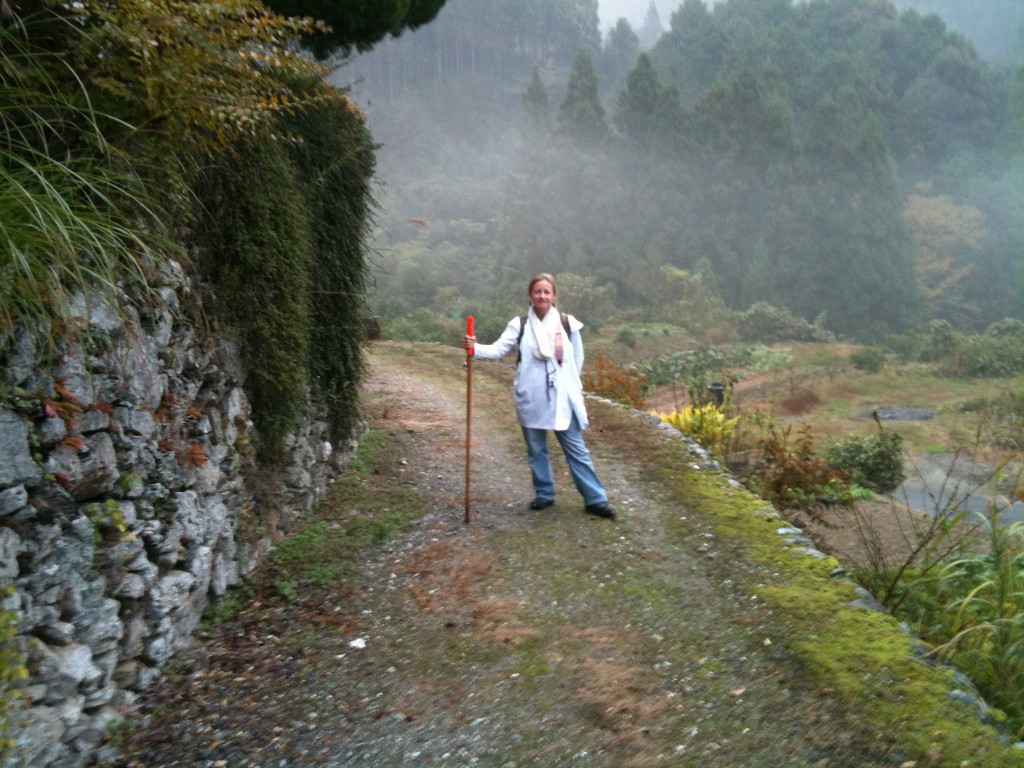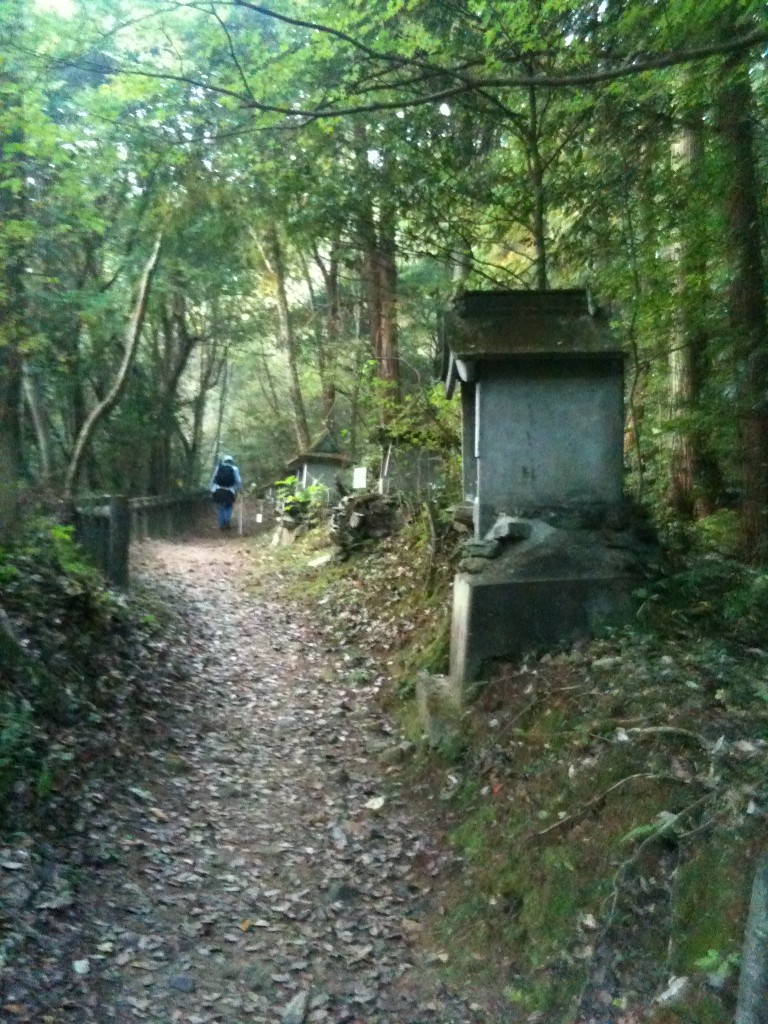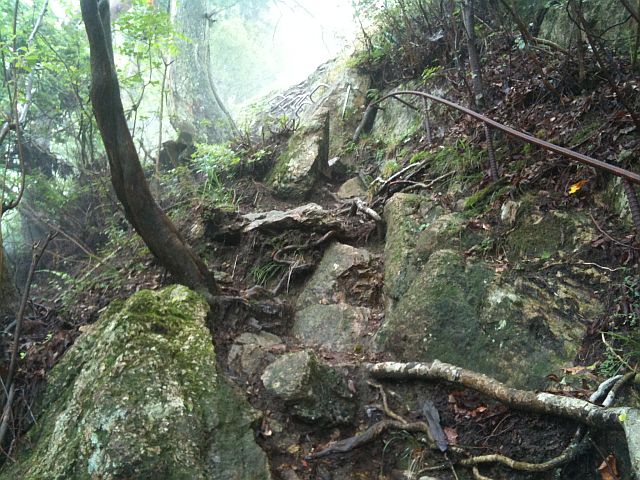
Amy Chavez strikes a pose on the pilgrimage trail (this and the photos below courtesy Chavez)
In the middle ages it was Kumano. In the Edo period it was Ise. Now it seems to be the 88 temples of Shikoku that are Japan’s prime pilgrimage destination.
Amy Chavez has recently published a book on running the pilgrimage. Yes, that’s right – running. Walking is too slow for her, and doing it the modern way by car or bus didn’t appeal as a spiritual exercise. Besides, she likes running, she declares.
Yet what follows is an account of a gruelling challenge to cover 1448 kilometers of mountainous terrain. There’s a constant struggle with protesting legs in what she calls ‘the daily trifecta of aches, swellings and blisters’. No pain, no gain goes the saying, and in her quest to further her spiritual side Amy learns to appreciate the rites and rituals of Shingon Buddhism through the hardships she endures.

The trail between temples
Like all good travel writing, the book is thus part-guide and part-personal odyssey as the author moves from temple to temple. Some are close together (close for a runner, that is!), while others are in isolated mountain settings. Throughout the book Amy maintains a breezy, well-judged narrative pace that allows one to accompany her progress without becoming breathless or bored.
‘Master of the light touch,’ comments Alex Kerr in an apposite phrase. The jocular asides and humorous comments are offset by serious points which include laying bare her own spiritual journey. It’s a delicate balance that could easily run off the rails – though it doesn’t.
As a Japan Times columnist, Amy has entertained readers for more than a decade now in a weekly column entitled Japan Lite. She’s written much about her life on a small island in the Inland Sea (population around 550), and the book too covers her reasons for deciding to settle there. It’s here that the underlying Shinto qualities of Japan’s traditional lifestyle become apparent.
Shingon is the nearest Buddhist sect there is to Shinto, and both share a similar attitude and reverence for nature (evident in mountain worship). There’s no Shinto priest on the island where Amy lives, yet Shinto rituals are dutifully carried out by the islanders. In their daily life the true nature of Japanese spirituality is apparent, as described by Amy in the passage below:
I worked in the city, and came home in the evenings to a quiet island life. The presence of the mountains and the sea restored my spirit. I was at ease with myself and my surroundings….
What came with island life was much more than I had ever imagined: traditional Japan. Shintoism, Buddhism and traditions Japanese city folk had long forgotten. The modern Japanese had fled to the cities and abandoned their culture in the countryside. Those left behind dutifully continued carrying out ancient rituals, prayers and festivals – the very things so much of Japanese culture is founded upon. Islanders awaken early to do neighborhood clean-ups, temple clean-ups, ritual sweeping. They plan annual events involving purification, good luck and prosperity. They pray to the gods, praise nature and honor their dead ancestors. This was community. This is virtue.
The island pulled me away from city life, begging me to discover the virtuous charms of the countryside, the charms of the real Japan, the charms of a Shinto background and a Buddhist soul.
*****************************************************************
Amy Chavez’s book Running the Shikoku Pilgrimage: 900 Miles to Enlightenment is published by Volcano Press with a foreword by Barefoot Ted McDonald. It can be purchased here.

Not so much a trail as a trial; getting up and over this was a big part of Amy's challenge in running between temples 87 and 88

Leave a Reply